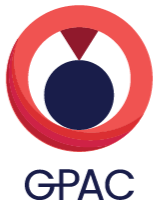Please check the following links for open positions.
Télécom Paris Multimedia Group
Our team, located near Paris, France, is working on many topics in the multimedia area. Let’s cite a few of them:
- Multimedia Systems Architecture: Authoring, Delivery and Presentation of Multimedia Services
- Scalable Coding and Adaptation of Multimedia Information
- Multimedia Security
- Distributed Multimedia Services
We are involved in many academic projects (European and French) as well as industrial partnerships. Most of our work is released under the LGPL license, and we welcome academics and engineers sharing our vision of open multimedia.
PhDs, Post-Doctorate, Traineeships, Internships may also be available. If you are looking for such a position and are fluent in either English or French, please check this page for open opportunities.
Motion Spell
Motion Spell, the professional services arm of GPAC, is always looking for talented developers and may have open positions. We welcome enquiries from remote open source developer ninjas with skills such as C/C++/Python/Go/Rust (streaming video, CDI/CDD).
Please follow our page LinkedIn page, where you can also set a job alert, or get in touch here.
